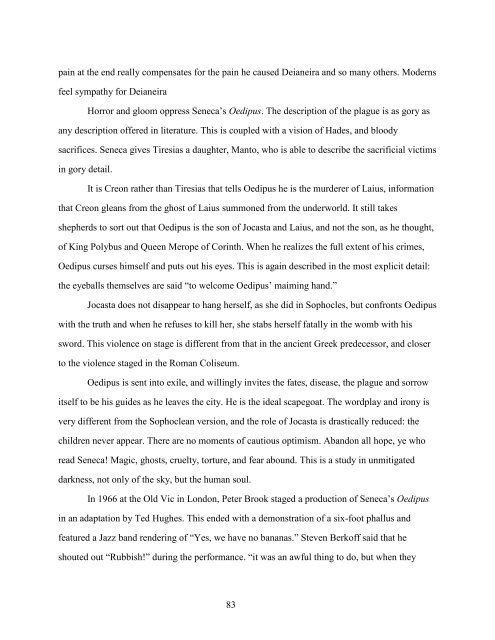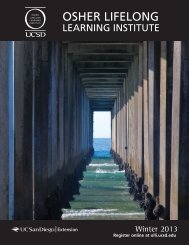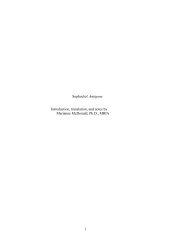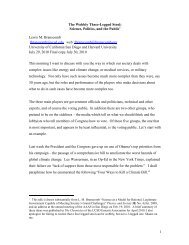1 The Living Art of Greek Tragedy Marianne McDonald, Ph.D., MRIA ...
1 The Living Art of Greek Tragedy Marianne McDonald, Ph.D., MRIA ...
1 The Living Art of Greek Tragedy Marianne McDonald, Ph.D., MRIA ...
You also want an ePaper? Increase the reach of your titles
YUMPU automatically turns print PDFs into web optimized ePapers that Google loves.
pain at the end really compensates for the pain he caused Deianeira and so many others. Moderns<br />
feel sympathy for Deianeira<br />
Horror and gloom oppress Seneca’s Oedipus. <strong>The</strong> description <strong>of</strong> the plague is as gory as<br />
any description <strong>of</strong>fered in literature. This is coupled with a vision <strong>of</strong> Hades, and bloody<br />
sacrifices. Seneca gives Tiresias a daughter, Manto, who is able to describe the sacrificial victims<br />
in gory detail.<br />
It is Creon rather than Tiresias that tells Oedipus he is the murderer <strong>of</strong> Laius, information<br />
that Creon gleans from the ghost <strong>of</strong> Laius summoned from the underworld. It still takes<br />
shepherds to sort out that Oedipus is the son <strong>of</strong> Jocasta and Laius, and not the son, as he thought,<br />
<strong>of</strong> King Polybus and Queen Merope <strong>of</strong> Corinth. When he realizes the full extent <strong>of</strong> his crimes,<br />
Oedipus curses himself and puts out his eyes. This is again described in the most explicit detail:<br />
the eyeballs themselves are said “to welcome Oedipus’ maiming hand.”<br />
Jocasta does not disappear to hang herself, as she did in Sophocles, but confronts Oedipus<br />
with the truth and when he refuses to kill her, she stabs herself fatally in the womb with his<br />
sword. This violence on stage is different from that in the ancient <strong>Greek</strong> predecessor, and closer<br />
to the violence staged in the Roman Coliseum.<br />
Oedipus is sent into exile, and willingly invites the fates, disease, the plague and sorrow<br />
itself to be his guides as he leaves the city. He is the ideal scapegoat. <strong>The</strong> wordplay and irony is<br />
very different from the Sophoclean version, and the role <strong>of</strong> Jocasta is drastically reduced: the<br />
children never appear. <strong>The</strong>re are no moments <strong>of</strong> cautious optimism. Abandon all hope, ye who<br />
read Seneca! Magic, ghosts, cruelty, torture, and fear abound. This is a study in unmitigated<br />
darkness, not only <strong>of</strong> the sky, but the human soul.<br />
In 1966 at the Old Vic in London, Peter Brook staged a production <strong>of</strong> Seneca’s Oedipus<br />
in an adaptation by Ted Hughes. This ended with a demonstration <strong>of</strong> a six-foot phallus and<br />
featured a Jazz band rendering <strong>of</strong> “Yes, we have no bananas.” Steven Berk<strong>of</strong>f said that he<br />
shouted out “Rubbish!” during the performance. “it was an awful thing to do, but when they<br />
83









